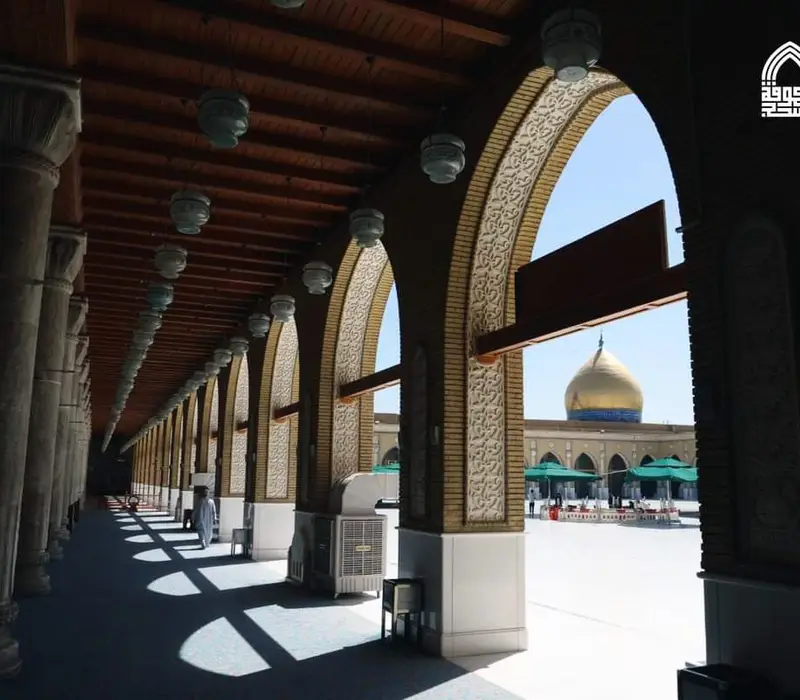Historic Kufa Mosque: A Spiritual Landmark in Iraq

The Kufa Mosque, located in the heart of Kufa city, Iraq, stands as a remarkable historical and religious landmark. Believed to date back to the time of Prophet Adam, with later reconstructions by Prophet Noah, this mosque’s foundations carry thousands of years of spiritual history. Built in 639 CE (19 AH) by the renowned companion Saad ibn Abi Waqqas, Kufa Mosque is one of the most significant and oldest mosques in the Islamic world. Beyond its architectural grandeur, the mosque offers visitors an atmosphere of peace and reflection, making it a must-visit for those exploring Iraq's rich spiritual heritage.
Explore the Kufa Mosque on maps.app.goo.gl6
Historical Background of Kufa Mosque
Foundations in Ancient Prophecies and History
According to prominent Islamic traditions, the Kufa Mosque dates back to the era of Prophet Adam, the first human in Islamic belief. Narratives suggest that Adam initially established a place of worship here. Later, Prophet Noah rebuilt the mosque after the Great Flood, making it an ancient structure deeply rooted in Islamic history.
Built by Saad ibn Abi Waqqas. Built in 639 CE, this structure became the central place of worship and community gathering in the newly founded city of Kufa, designed to serve the growing Muslim population in the region.
Architectural Details of Kufa Mosque
Dimensions and Structure
Spanning an impressive 11,162 square meters, the Kufa Mosque stands out with its unique architectural design. The mosque's length of 110 meters and width of 101 meters make it one of the largest religious structures in Iraq. The exterior wall, reaching a height of 10 meters, provides a sense of grandeur and protection to the mosque’s interior sanctum.
Inside, the courtyard spans 5,642 square meters, offering an open, serene space for prayer and contemplation. The additional chambers surrounding the courtyard cover an area of 5,520 square meters, providing ample space for worshippers and visitors to explore and learn about this historic site.
Minarets and Columns
The Kufa Mosque features 187 pillars and four towering minarets, each rising to a height of 30 meters. These minarets not only add to the mosque’s architectural beauty but also serve as iconic symbols representing Islamic heritage in Kufa. The structural design reflects Islamic artistry, providing an inspiring visual experience for visitors from all over the world.
The Unique Gates of the Kufa Mosque
Five grand gates grant access to the mosque, each carrying its own historical significance:
Bab al-Hujjah (Gate of the Proof)
Bab al-Thuban (Gate of the Serpent)
Bab al-Rahma (Gate of Mercy)
Bab Muslim ibn Aqil (Gate of Muslim ibn Aqil)
Bab Hani ibn Urwah (Gate of Hani ibn Urwah)
These gates not only serve as entry points but are also symbols of the mosque’s legacy, each commemorating prominent figures and events in Islamic history.
The Sacred "Sufayna" Structure
At the center of the mosque lies a remarkable sunken area known as the Sufayna. Accessible through a staircase, it is believed to be where Noah’s Ark once rested after the Great Flood, according to Islamic tradition. This site holds special significance for visitors, offering a unique connection to ancient prophetic history.
Spiritual Significance of the Kufa Mosque
One of the Four Most Revered Mosques in Shiite Islam
The Kufa Mosque holds a high position among Shiite Muslims as one of the four sacred mosques in Islam, alongside the Masjid al-Haram in Mecca, Masjid an-Nabawi in Medina, and the Al-Aqsa Mosque in Jerusalem. This esteemed status draws countless Shiite pilgrims who wish to honor the legacy of Prophet Muhammad’s family and companions.
Mausoleums of Religious Figures
The Kufa Mosque also contains the tombs of several revered figures, adding to its spiritual importance:
Muslim ibn Aqil – Cousin of Imam Hussein and an important figure in the early Islamic era.
Hani ibn Urwah – A devoted supporter of Muslim ibn Aqil and a respected companion.
Mukhtar al-Thaqafi – A prominent figure who led a movement to avenge the martyrdom of Imam Hussein.
These shrines are sites of devotion, attracting pilgrims from across the world who come to pay their respects and seek blessings.
Visiting the Kufa Mosque: Practical Information
Open Space and Capacity for Worshippers
The Kufa Mosque accommodates up to 40,000 worshippers at once, making it one of Iraq’s largest mosques in terms of capacity. The open-air courtyard, lined with arched corridors and shaded prayer spaces, allows visitors to immerse themselves in worship and reflection in a serene environment.
Free Entry and Amenities
Entrance to the Kufa Mosque is free of charge. Visitors will find amenities such as restrooms and rest areas available at no cost, making it a convenient and welcoming destination for travelers and worshippers alike.
Tips for Travelers
For those interested in visiting, here are some travel tips:
Respectful Attire: As a place of worship, visitors are encouraged to dress modestly.
Quiet Reflection: Maintaining a peaceful atmosphere is essential in the mosque to respect its spiritual ambiance.
Accessibility: The mosque’s main areas are accessible to visitors of all ages, ensuring that everyone can appreciate this historic landmark.
The Kufa Mosque remains a true spiritual landmark in the heart of Iraq, merging rich history with architectural beauty. Its connection to Islamic prophets and sacred Shiite figures draws countless visitors each year, making it an essential stop for those exploring Iraq’s religious heritage. With its serene atmosphere, impressive structure, and welcoming amenities, the Kufa Mosque offers visitors a profound experience of peace and reflection.